Hard work and long journey make the years flow like gold. Huaihua University is located in Huaihua City, Hunan Province, the city of “One seed changes the world”. With the beauty of dyed snow peaks and the charm of Jinghui River, it is an application-oriented local undergraduate college in the “Pearl of the Southwest” of the motherland. . The school was founded in 1958 and was originally named Qianyang Normal College. In 1982, the former Qianyang Branch of Hunan Agricultural College was merged into the school. In 1983, it was renamed Huaihua Normal College. Undergraduate education was launched in 1998. In 2000, Qianyang Normal College was merged into the school. Entered the school and was approved by the Ministry of Education in 2002 to be upgraded to a full-time general undergraduate institution and renamed Huaihua College. In 2004, it obtained the right to confer bachelor's degrees. In 2012, it passed the Ministry of Education's undergraduate teaching qualification evaluation. In 2019, it passed the Ministry of Education's undergraduate teaching qualification. After review and evaluation, the master's degree will be awarded to the project construction unit in 2021, selected into the Ministry of Education's Normal Education Collaborative Quality Improvement Plan in 2022, and approved as the first national healthy school construction unit and the Hunan Provincial University Intellectual Property Center in 2023. In recent years, the school has also been awarded the title of National Advanced Unit for Spiritual Civilization Construction, National Public Institution Energy Saving Demonstration Unit, National Advanced National Sports Collective, Hunan Province Civilized Window Unit, Hunan Province Civilized Universities, Hunan Province University Party Building Demonstration School, and Hunan Province Civilized Universities. Campus and many other honorary titles. The school currently has two campuses, covering an area of 1,158 acres and a construction area of 490,763.97 square meters; the total value of teaching and scientific research instruments and equipment is more than 200 million yuan; there are 1,277 faculty members, 127 with senior professional titles, and 259 with doctorate degrees. It has 23 functional departments and teaching assistant institutions, 16 colleges (departments), 50 undergraduate majors with enrolled students, and 20,724 full-time students. There are gardening, social work, ideological and political education, Chinese language and literature, English, mathematics and applied mathematics, information and computing science, biological science, materials chemistry, chemistry, physics, primary education, public utility management, logistics management, tourism management, Musicology, preschool education, business English, physical education, fine arts, mechanical design, manufacturing and automation, optoelectronic information science and engineering, software engineering, cyberspace security, food quality and safety, landscape architecture, bioengineering, biopharmaceuticals, cross-border Border e-commerce, international economics and trade, law, financial management, electrical engineering and automation, communications engineering, electronic information science and technology, computer science and technology, pharmaceutical engineering, network and new media, environmental design, product design, digital media 47 majors, including art, dance, visual communication design, artificial intelligence, robotic engineering, data science and big data technology, and history, are open to enrollment in 27 provinces (municipalities and autonomous regions) across the country. The school has signed cooperation agreements with 37 universities in 18 countries and regions including the United States, the United Kingdom, Australia, New Zealand, Germany, Hungary, Ukraine, Thailand, Malaysia, Japan, and South Korea. Substantial cooperation has been carried out in areas such as cooperative education and mutual recognition of credits, scientific research, teacher training and exchanges, and student exchanges. It has successively recruited more than 100 language and academic students from 17 countries including the United States, Spain, Russia, Bangladesh, Nepal, Pakistan, Mongolia, Laos, Vietnam, Uzbekistan, Kazakhstan, Thailand, Indonesia, Sudan, Mauritania, Myanmar, and Angola. . The school has 1 national-level specialty major, 1 national-level comprehensive reform pilot major, 5 national-level first-class undergraduate major construction sites, 4 provincial-level applied specialty disciplines, 1 provincial-level key major, 7 provincial-level specialty majors, There are 4 provincial-level comprehensive reform pilot majors, 28 provincial-level first-class undergraduate major construction sites, 3 provincial-level teaching teams, 3 provincial-level scientific and technological innovation teams, 2 national-level first-class courses, and 61 provincial-level first-class courses. The school has built 16 practical (experimental) teaching centers, including 3 provincial practical teaching demonstration centers, 1 provincial basic course demonstration laboratory, 1 provincial virtual simulation laboratory, and 17 provincial college student innovation and entrepreneurship education centers. There are 4 provincial-level innovation and entrepreneurship incubation demonstration bases (spaces) for college students; 233 off-campus practical teaching bases and talent training bases have been built, including 1 national-level off-campus practical education base for college students, and provincial-level school-enterprise cooperation talent training (innovation and entrepreneurship education) There are 14 bases and 8 provincial-level outstanding internship teaching bases. The school has 29 provincial (ministerial) scientific research platforms, including the Hunan Provincial Key Laboratory for Research and Utilization of Ethnic Medicinal Plant Resources, the National Ethnic Affairs Commission Huaihua College Chinese Ethnic Community Research Base, and the Hunan Provincial Folk Intangible Culture Research Base. Ethnic medicine research and 2 demonstration bases for industry-university-research cooperation among universities in Hunan Province including development, traditional Chinese medicine preparations and quality control. In the past five years, teachers have published 3,586 papers, including 749 high-quality papers, and published 202 academic monographs; they have obtained 1,160 authorized patents and 175 patent transformations; they have won 498 scientific research projects at the provincial and ministerial level or above, and the National Natural Science Foundation , 24 projects have been approved by the National Social Science Fund, including 8 national-level projects and 5 national social science projects in 2023, ranking 13th among universities in the province; it has won 10 awards at the provincial and ministerial level or above, including one provincial natural science award. First prize and one first prize each for provincial philosophy and social science achievement awards; teachers published 512 papers on education reform, presided over 203 education reform projects at or above the provincial level, and won 1 first prize, second and third prizes for provincial teaching results for their research results 9 items; students participated in various subject competitions and won 27 national first prizes and 248 provincial first prizes, ranking first among similar universities in the province in terms of number of awards; students participated in the "Internet +" Innovation and Entrepreneurship Competition It has won 12 national bronze medals, 8 provincial gold medals, 24 silver medals, and 43 bronze medals. The total number of awards ranks among the top universities in the province. The school has trained more than 160,000 graduates of various types for the country, a large number of whom have become leading cadres of party and government agencies at all levels or teaching and scientific research backbones of well-known domestic and foreign universities and scientific research units. Excellent talents such as Xi Nanhua (Level 78), academician of the Chinese Academy of Sciences, Wang Yuewen (Level 81), a famous writer, Chen Sisi (Level 90), a singer, and Jiang Wuzhen (Level 92), one of the “Top Ten Outstanding Young Jurists in the Country”, are among the representatives. Pursue excellence and move forward in pursuit of dreams. Standing on the new journey of the second centenary goal, the school adheres to the school motto of "Huairen transforms things, stands up to the sky" and adheres to the school-running philosophy of "building applied disciplines, running applied majors, doing applied research, and cultivating applied talents" policy, establishing the development goal of "open development, rapid leapfrog", based in Huaihua, serving Hunan, facing the southwest, and radiating across the country, taking the implementation of school-enterprise cooperation as a breakthrough, open schooling; problem-oriented, promoting applied scientific research; cultivating application We aim to serve local talents with the goal of leading local economic and social development, make contributions and gain status, and make steady progress towards the goal of building a regional high-level application-oriented university.
-

Tsinghua University
-

Peking University
-

Fudan University
-

Wuhan University
-

Zhejiang University
-

Nanjing University
-

Sun Yat-sen University
-

Tongji University
-

Renmin University of China
-

Jahrom University of Medical Sciences
-

Mesoamerican University
-

Istmo University
-
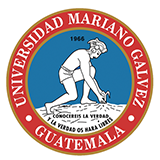
Mariano Galvez University of Guatemala
-
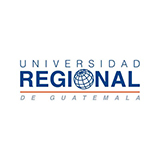
Regional University of Guatemala
-
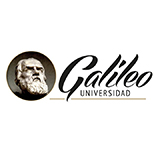
Galileo University
-
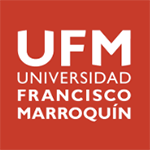
Francisco Marroquín University
-

Rafael Landívar University
-
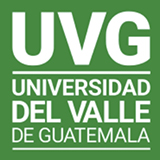
University of the Valley of Guatemala
-
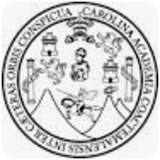
University of San Carlos of Guatemala
-

Technological Institute of Tlaxcala Plateau
-

Golfo University
-
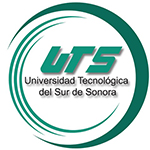
Technological University of South Sonora
-
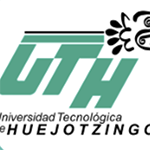
Technological University of Huejotzingo
-
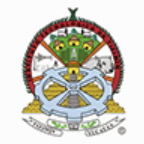
Tizimín Institute of Technology
-

Chilpancingo Institute of Technology

